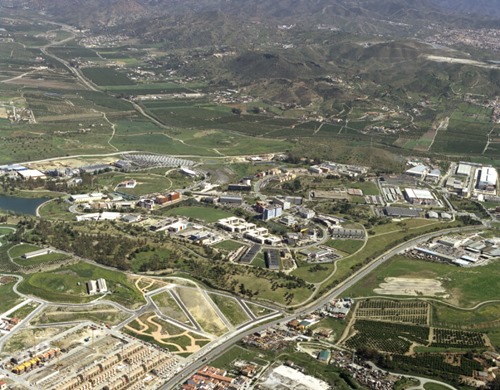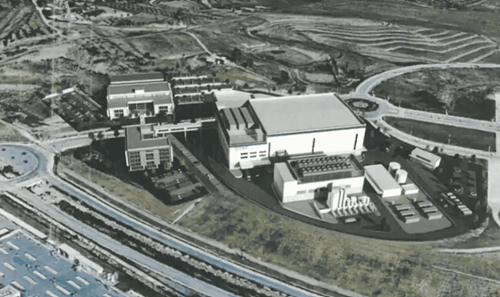Imec moves ahead with their facilities in Malaga TechPark: 5 key takeaways for AOIs/IDs/STPs
/Ma_laga-TechPark.jpg)
Last July, we shared an exciting development from one of our members, Malaga TechPark, about plans to bolster Spain's microelectronics ecosystem. Imec, the world’s leading independent nanoelectronics R&D hub will establish its second European manufacturing and R&D center in Malaga, which also happens to be the home of IASP headquarters.
This month, we’ve learned that imec’s hub will be built on a 46,000 square meter plot, giving it a notable presence within the park and moving closer towards its inaugural date, planned for 2030. The project aims to enhance Europe’s technological sovereignty focusing on R&D in sectors like automotive, health, and defense, will cost €615 million (of which Spain’s government will finance €500 million), and is expected to create over 450 highly qualified jobs. For reference, imec employs over 5,000 people around the world.
What technology parks and areas of innovation can learn from imec's expansion in Malaga TechPark
The recent announcement of the establishment of a cutting-edge microchip research and manufacturing center by imec in Malaga serves as a noteworthy example of how strategic collaboration, governmental support, and proper infrastructure can promote innovation and attract significant investments to science/technology parks (STPs), Innovation Districts (IDs), and Areas of Innovation (AOIs). As STPs/IDs/AOIs around the world strive to attract similar investments, they can draw valuable lessons from this development to enhance their own ecosystems and positioning in the competitive global marketplace for high-tech industries.
1. Building solid public-private partnerships
A crucial element of the success of bringing imec to Malaga TechPark has been the collaboration between local, regional, and national governments, as well as private entities. The Spanish government committed a substantial amount of funding, and local stakeholders — including the autonomous government of the Junta de Andalucía and the Malaga City Council — are providing essential support, including infrastructure and urban planning. This public-private partnership model highlights the importance of having a unified, multi-stakeholder approach to securing these types of developments for technology parks.
For an AOI/ID/STP seeking to attract similar investments, forming these strategic partnerships with various levels of government, private investors, and academic institutions is an essential part of the formula. Local governments will need to offer favorable policies and tax incentives as well as dedicated resources including land and infrastructure development. Similarly, when national governments allocate funds and regulatory support, it encourages continued technological innovation and business expansion.
Additionally, private sector involvement ensures that investments align with market demand and provides the financial impetus required to develop large-scale projects. Local and national governments can help secure more of these investments by streamlining regulations — including permitting, zoning, and environmental regulations — and infrastructure, thus increasing their appeal to potential investors. By ensuring that regulatory processes are efficient and transparent, technology parks will be able to attract more projects like imec.
2. Positioning the park as a strategic hub
The imec project highlights the value of positioning an AOI/ID/STP as a strategic hub within an industry. For this project, the government designed the strategic PERTE Chip project to position Spain at the forefront of the European microelectronics and semiconductor industry. This deliberate positioning creates a compelling case for investors and companies seeking to capitalise on the innovation space’s access to cutting-edge research and development capabilities.
AOIs/IDs/STP looking to attract similar high-profile investments should evaluate their position and the specific industries they aim to serve. This involves identifying sectors with high growth potential and global demand, such as artificial intelligence, renewable energy, or biotechnologies. Once a niche (or a few potential areas of interest) has been identified, tailoring the service offering and infrastructure to appeal to companies operating in those sectors is recommendable.
Such innovation spaces should also carefully consider how their identity and current status is perceived by various stakeholders in order to better understand key strengths and plan accordingly. By positioning themselves strategically towards specific fields, this can attract both direct investments from companies like imec and indirect investments from suppliers and clients within the ecosystem.
3. Leveraging local talent and academic collaboration
Another significant lesson from the imec project is the importance of leveraging local talent and fostering compelling collaborations with academic institutions. Imec's Vice President, Jo de Boeck, highlighted that one of the goals of the Malaga center is to “attract top talent from academia and industry” while encouraging collaboration that strengthens the entire region’s technological capacity. The University of Malaga (UMA) is poised to play a central role in this initiative, particularly in areas of research, innovation, and training the next generation of experts and specialists in the field of semiconductors.
This is further proof that, if possible, technology parks should seek collaboration opportunities with nearby universities and research institutions. A partnership of this nature can facilitate joint research projects and contribute to the education of a skilled workforce that meets the needs of emerging industries as they evolve.
Establishing incubators, research centers, and technology transfer offices within the AOI/ID/STP can further bridge the gap between academia and industry, driving innovation and the creation of new technologies. Ensuring that the local talent pool is equipped with the necessary up-to-date skills and expertise will make the innovation space that adopts this approach an attractive destination for both foreign and domestic investors.
4. Providing tailored support for startups and organisational growth
One of the distinctive features of the imec project is the plan to stimulate a broader innovation ecosystem in the Malaga TechPark. Imec’s expansion is not only about constructing a research facility, but also about nurturing a supportive environment for startups and small-to-medium enterprises (SMEs) involved in semiconductor technology. With imec’s arrival, supplier companies and potential clients are already showing interest in setting up operations in the area.
The project is expected to catalyse the creation of an entire ecosystem of innovation, driven by collaboration between established companies, new startups, and research institutions. AOIs/IDs/STPs can apply the lessons from this example by developing an approach that nurtures innovation at every stage of the process. Creating incubators, offering mentorship programmes, and providing access to venture capital are all critical elements in helping startups thrive.
As we often see amongst the most successful AOIs/IDs/STPs, establishing collaborative research and development initiatives that allow startups to work alongside large enterprises and research institutions creates a dynamic environment. This enables companies to innovate faster, share resources, and co-develop products. Another pillar of success that such innovation spaces are already skilled in doing, but is essential, is facilitating networking opportunities, conferences, and industry events to foster collaboration and knowledge exchange among resident companies.
5. Focusing on long-term sustainability
The imec project is designed to foster long-term sustainability in both economic and technological terms. The facility aims to reduce Europe’s dependence on foreign semiconductor technologies, contributing to the region’s technological sovereignty. By focusing on sectors with growing global demand and prioritising sustainable development, such as energy-efficient manufacturing practices and eco-friendly policies, technology parks can create a lasting impact on the industries they serve.
Focusing on sustainability will not only align with global shift towards a greener future, but will also create a positive impression of the AOI/ID/STP among various stakeholders, including investors, employees, and local communities. In the long run, innovation spaces that prioritise sustainability will likely be better positioned to attract investment from companies and industries committed to reducing their carbon footprints and promoting corporate social responsibility.
A valuable lesson for technology parks worldwide
The imec expansion in Malaga offers valuable insights for innovation ecosystems looking to attract high tech investments. By focusing on building strong public-private partnerships, positioning Malaga TechPark as a strategic hub, leveraging local talent, supporting startups, and prioritising sustainability, science/technology parks, innovation districts and areas of innovation can enhance their appeal to global companies.
The path to success lies in creating an environment where innovation can flourish and both local and international businesses can thrive. By drawing lessons from Malaga TechPark’s imec example, which is geared toward many of the takeaways identified from this initiative, innovation spaces everywhere can find a way to position themselves as the next generation of hubs to contribute to global technological advancements and truly live up to their promise.
/)



/canvascolor(0xffffffff)/2023_07_27_Italy_Road_2.jpg)
/canvascolor(0xffffffff)/2017_10_31_Spain_Fundacion_Comunitat_Valencian.jpg)
/canvascolor(0xffffffff)/tartu-science-park_eng_land_rgb.jpg)
/canvascolor(0xffffffff)/IMG_6966_1.jpg)
/canvascolor(0xffffffff)/LOGO_TEKNOPARKBEYAZ.png)
/canvascolor(0xffffffff)/logo_19.png)
/canvascolor(0xffffffff)/2018_01_24_Italy_Kilometro_Rosso.png)
/canvascolor(0xffffffff)/2017_10_25_Mexico_PIIT_Monterrey.png)
/canvascolor(0xffffffff)/2017_11_10_Sweden_IDEON_Science_Park.jpg)
/canvascolor(0xffffffff)/2022_11_11_Thailand_Prince_of_Songkla_University_SP.jpg)
/canvascolor(0xffffffff)/MemberLogo-5735-6186.jpg)
/canvascolor(0xffffffff)/2019_08_01_Finland_Business_Joensuu.jpg)
/canvascolor(0xffffffff)/IMG_6669_1.png)
/canvascolor(0xffffffff)/2017_10_25_The_Netherlands_Utrecht_SP.png)
/canvascolor(0xffffffff)/MemberLogo-75401-5958.jpg)
/canvascolor(0xffffffff)/Tech_Parks_Arizona_1.png)
/canvascolor(0xffffffff)/2024_12_10_Canada_Entreprendre_Sherbrooke_Logo.png)
/canvascolor(0xffffffff)/buildings2.png)
/canvascolor(0xffffffff)/2022_01_26_Spain_PCT_Tenerife.jpg)
/canvascolor(0xffffffff)/PSP_Logo-mit-Schriftzug_1.jpg)
/canvascolor(0xffffffff)/2017_10_24_Morocco_Technopark_Morocco.JPG)
/canvascolor(0xffffffff)/MemberLogo-5761-6218.png)
/canvascolor(0xffffffff)/2024_09_26_Thailand_Northeastern_2.jpg)
/canvascolor(0xffffffff)/2020_03_06_Milan_Innovation_District.png)
/canvascolor(0xffffffff)/2017_08_03_Uni_of_Nairobi.jpg)
